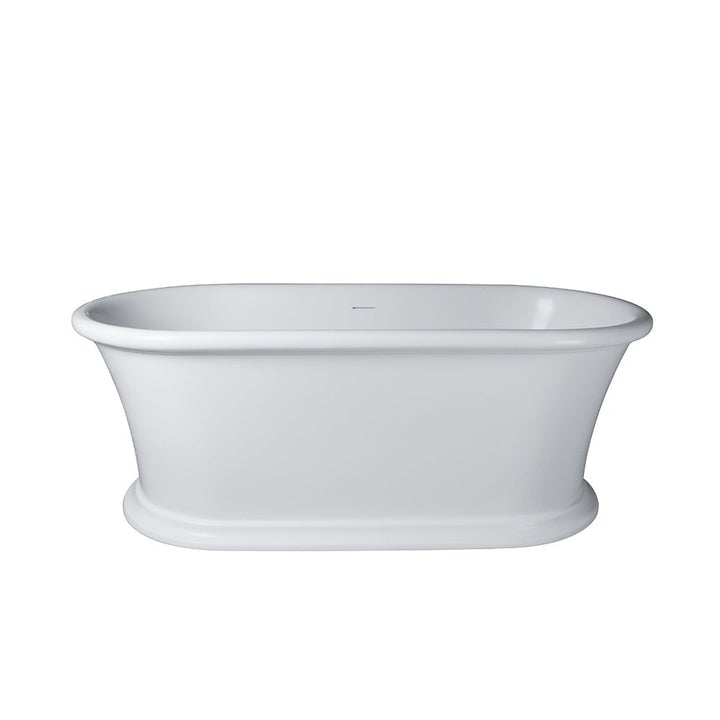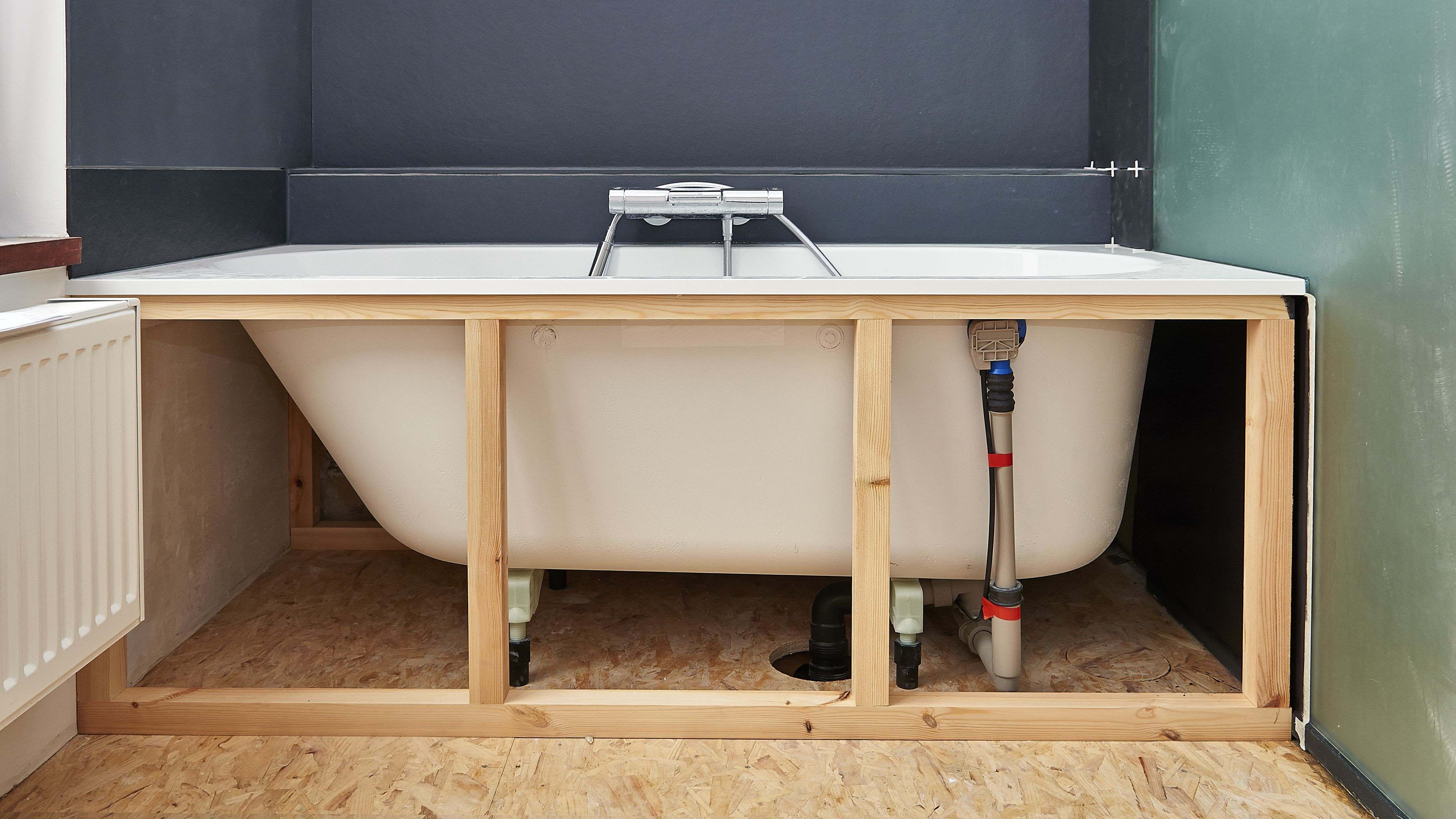How to Install a Tub ( Guide).
How to Install a Tub ( Guide).
Blog Article
We've unearthed the article pertaining to How to Install a Bathtub down the page on the internet and think it made sense to talk about it with you on this page.

Installing a tub isn't exactly rocket science, yet it does require strong plumbing, carpentry, as well as sometimes, tiling abilities. Changing an old bathtub with a brand-new one is also a moderately hard project. If the old bathtub is readily available, the task can relocate quickly; if you need to open a wall surface to get rid of the old tub and position the brand-new bath tub, the task is a lot harder. In either case, the task is within a home handyman's abilities, although you will need an assistant to leave the old bathtub and embeded in the new one. Make certain you have actually qualified on your own for the job and fit trying it. Instead of working with a specialist to take control of a halfway-completed project, it is much better to take into consideration employing one before you start. Chances are you might require a professional plumber to make tube links.
This write-up will assist you set up a brand-new bath tub in your restroom if you have actually currently bought a new tub as well as don't require to transform the arrangement of your previous supply of water pipelines.
Your devices and material list need to comprise the following:
Removing Old Taps
If you need to replace old faucets with new ones as a part of your setup, then the first thing you must do is separate the water. After doing so, turn on the taps to drain any type of water continuing to be in the system. The procedure of removing the existing taps can be quite troublesome because of the limited accessibility that is usually the case.
Use a basin wrench (crowsfoot spanner) or a tap tool to undo the nut that links the supply pipelines to the faucets. Have a towel all set for the staying water that will originate from the pipelines. As soon as the supply pipelines have actually been gotten rid of, make use of the same device to loosen up the nut that holds the faucets onto the bath/basin. You will certainly require to stop the single faucets from transforming throughout this process. When the taps have been removed, the holes in the bath/basin will have to be cleaned of any old sealing compound.
Before proceeding to fit the brand-new faucets, contrast the pipeline connections on the old taps to the new taps. If the old taps are longer than the brand-new faucets, after that a shank adapter is needed for the brand-new taps to fit.
Fitting New Taps
If the tails of the new faucets are plastic, after that you will certainly need a plastic port to prevent damage to the thread. One end of the adapter fits on the plastic tail of the faucet as well as the other end gives a link to the existing supply pipelines.
If you require to fit a monobloc, after that you will require reducing couplers, which attaches the 10mm pipeline of the monobloc to the common 15mm supply pipe.
Next, place the faucet in the installing hole in the bath/basin ensuring that the washers remain in location between the faucet as well as the sink. Secure the faucet in position with the producer provided backnut. As soon as the faucet is securely in position, the supply pipes can be connected to the tails of the faucets. The taps can either be connected by utilizing corrugated copper piping or with typical tap connectors. The previous type should be attached to the faucet ends initially, tightening up only by hand. The supply pipelines can later on be connected to the various other end. Tighten up both ends with a spanner after both ends have been attached.
Setting up the Bathtub
Making use of the two wood boards under its feet, position the tub in the required placement. The wooden boards are helpful in equally spreading the weight of the bath tub over the area of the boards instead of concentrating all the weight onto four small factors.
The next objective is to guarantee that the bath tub is leveled all round. This can be accomplished by examining the level and changing the feet on the bathtub till the spirit level reviews level.
To mount taps, fit all-time low of the outermost flexible faucet connector to the proper supply pipe by making a compression sign up with; then do the exact same for the other tap.
Activate the supply of water and also inspect all joints and also new pipework for leakages and tighten them if needed. Fill the tub and likewise examine the overflow outlet and also the normal electrical outlet for leakages.
Ultimately, repair the bathroom paneling as described in the maker's instruction manual. Tiling as well as securing around the bathtub must wait until the tub has actually been used a minimum of when as this will settle it right into its last position.
Getting ready for the Installment
First of all, the sustaining structure supplied with the bathroom needs to be fitted (if required) according to the maker's guidelines. Next off, fit the faucets or mixer to the bath tub. When suitable the faucet block, it is essential to make certain that if the faucet comes with a plastic washer, it is fitted in between the bathroom and also the taps. On a plastic bath, it is likewise reasonable to fit a sustaining plate under the taps system to avoid pressure on the bath tub.
Fit the flexible tap ports to the bottom of the two faucets making use of 2 nuts and also olives (sometimes supplied with the tub). Fit the plug-hole outlet by smearing mastic filler round the sink outlet hole, and then pass the outlet through the hole in the bath. Utilize the nut provided by the maker to fit the plug-hole. Check out the plug-hole outlet for an inlet on the side for the overflow pipe.
Next, fit the end of the flexible overflow pipe to the overflow outlet. After that, screw the pipeline to the overflow face which need to be fitted inside the bathroom. Make sure you use all of the supplied washers.
Connect the trap to the bottom of the waste outlet on the bathtub by winding the thread of the waste outlet with silicone mastic or PTFE tape, as well as screw on the catch to the outlet. Connect the bottom of the overflow tube in a similar manner.The bath should now be ready to be fitted in its last placement.
Tiling Around the Bath tub
In the location where the bathroom fulfills the floor tile, it is needed to secure the accompanies a silicone rubber caulking. This is very important as the installation can move enough to break a rigid seal, causing the water to penetrate the wall surface in between the bathroom as well as the tiling, leading to difficulties with dampness and feasible leakages to the ceiling listed below.
You can select from a variety of coloured sealants to assimilate your components as well as fittings. They are sold in tubes and also cartridges, and also can sealing gaps approximately a size of 3mm (1/8 inch). If you have a bigger gap to fill, you can load it with spins of soaked newspaper or soft rope. Keep in mind to always fill the bathtub with water prior to securing, to allow for the activity experienced when the bathtub is in usage. The sealer can break fairly very early if you do not think about this motion before securing.
Additionally, ceramic coving or quadrant ceramic tiles can be used to border the bath or shower tray. Plastic strips of coving, which are easy to use and reduce to size, are also conveniently readily available on the marketplace. It is recommended to fit the ceramic tiles using waterproof or water resistant adhesive as well as grout.
Bathtub Installation
How Important Is A Bathtub To Your Home?
High-quality baths, showers, and other bathroom updates are necessary when considering a smart investment in your home. It’s a room that you go to every day and one that is constantly being used by guests.The bathroom is one of the top trafficked rooms in a home and also one of the most valuable in terms of home resale.
Install Piping Before Tub
You will be using your existing drain and waste vent system, but pipes required include the hot and cold water supply lines and a pipe leading to a shower head. A mixing valve and shower head are also needed. Air chambers may be required.
Position the Tub
Lower the tub into place so that the continuous flange fits against the wall studs and rests on 1’x4' or 2’x4' supports. Anchor the tub to the enclosure with nails or screws inserted through the flanges into the studs.
NOTE: Remember, bathtubs and shower stalls may require support framing. A bathtub filled with water is extremely heavy, so check building codes and framing support before installing the tub.
Assemble Drain Connections
Assemble the bathtub drain connections by connecting the tub overflow with the tub drain above the trap, not beyond it. The trap will have a compression fitting that screws over the arm of the overflow assembly.
Place a Pipe For the Shower Head
First, locate a brass female threaded winged fitting and attach it to a framing support via a screw or a nail. Then run a pipe up the wall for the shower head. Sweat or solder the other side of the brass fitting to the top of the pipe.
Attaching Hot and Cold Water Lines
Attach your water lines for both hot and cold by sweating these directly into the hot and cold ports of the mixing valve. The mixing valve will be how water enters the tub’s system, not by the pipes themselves.
Install the Spout
Extend a piece of 1/2 inch pipe, or whichever length is specified in the manufacturer’s instructions, for the tub spout. Sweat on a male threaded fitting at the end of the pipe or use a brass nipple of the proper length and a 1/2 inch cap.
NOTE: At this point you should have your rough-in plumbing work inspected before proceeding further.
Check For Leaks
Restore the water pressure and check the drain connection and the supply pipes for any sign of leaking.
estore the Bathroom Wall
Replace the wall with moisture-resistant drywall as a base for your wall covering. Seal the joints between the wall and your new tub with silicone caulk as protection against water seepage.
https://www.berkeys.com/2016/12/02/bathtub-installation-dallas/

I recently found that article about How to Install a Bathtub when doing a lookup on the internet. Are you aware of somebody else who is very much interested in the niche? Be sure promote it. Bless you for your time. Don't hesitate to visit our blog back soon.
Further Details Report this page